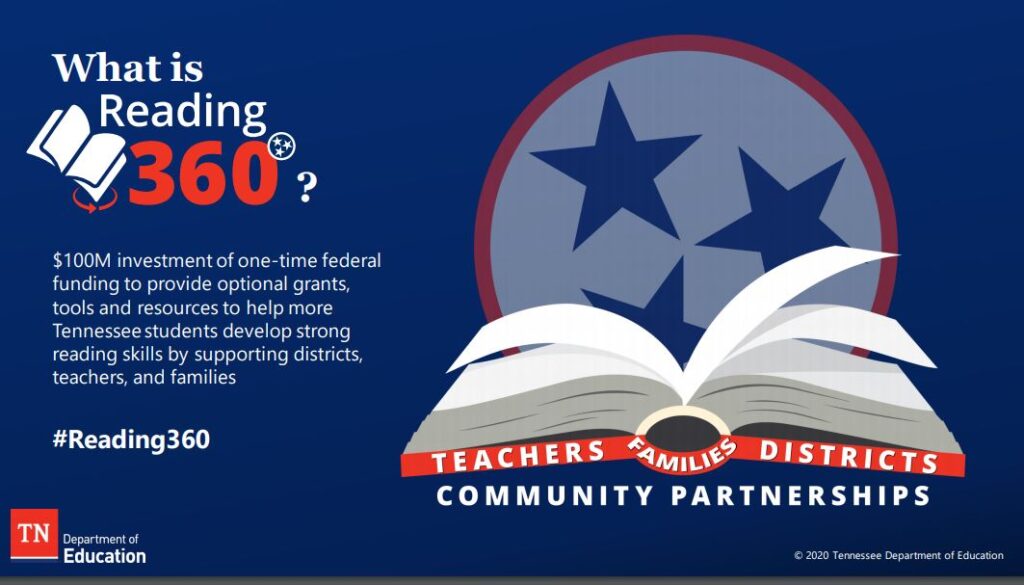Web-based education has become the new normal for school districts across the state, as teachers and students transitioned to remote learning models to curb the spread of COVID-19. While this transition has enabled teachers and students to utilize technology in new ways, it’s also highlighted the need for greater access to online learning materials for students across the state.
The in-home learning model implemented by Knox County Schools addresses this need by offering learning materials in a variety of formats (e.g. paper packets, instructional videos via YouTube and the local PBS channel and the school system’s website), making lessons accessible for all students. These options allow families to access educational materials in ways that best suit their children’s needs and interest levels, while ensuring that every student can maintain and build upon the academic progress they had made in the classroom. Likewise, the model provides teachers with an array of ways to connect with families including email and phone and web conference calls to ensure that students’ individual academic needs are being met.
Knox County Schools’ early childhood supervisor, Beth Lackey, spoke with us about the in-home learning model and how the model’s options for connectivity have been instrumental in helping students transition to this new learning environment.
Read our Q&A with Beth below:
Question: COVID-19 has had a huge impact on Tennessee’s schools. Describe how Knox County Schools transitioned from classroom to in-home learning.
Answer: The Knox County Schools Teaching and Learning supervisors worked with district instructional specialists to identify grade-level expectations that were important for students to review. The focus of the in-home learning was to provide students with opportunities to review previous learning and engage in activities that would support reading, writing, mathematical thinking, and science and social studies exploration. The goal was to provide learning opportunities in a variety of formats so that all students could access the materials. Additionally, teachers created videos to support instruction and those videos were available for students through our KCS-TV cable channel, our district’s YouTube channel and the local PBS channel. In a district with so many students with diverse needs and abilities, it was important to consider a variety of learning opportunities to support learning for all students.
The packet for preschool students was specifically designed to give families opportunities to interact with each other through nursery rhymes, scavenger hunts, games, and projects. Additionally, families were provided with choice boards and communication boards to provide support for students at all developmental levels. Families were provided with a variety of choices to meet the needs and interest levels of our youngest learners.
Question: How do you keep learning going when you’re separated from your students and they’re in a remote environment? What is the expectation for student accountability?
Answer: Our main goal was to ensure that our students had access to learning activities, either via paper packets or through our school system website. By pairing our learning packet distribution with our food distribution, we were able to provide families with access to the learning materials. While the material is not graded, students are provided with different activities each week to support reading, math, social studies, and science. Students will have access to a new activity packet each week with a variety of activities.
Question: KCS has provided an impressive arrangement of resources for parents and caregivers. How are you working with students and parents to understand and utilize those resources in a way that aligns to your accountability expectations?
Answer: Teachers in the district are encouraged to support students and families. Teachers have used Canvas, Zoom, Class Dojo, email, phone calls, and other learning formats to reach their students. Teachers have also provided students with the necessary passwords so they can access online learning using school approved websites. Teachers and various support staff have reached out to families to serve as a support system regarding both academic and basic needs.
Question: What’s your message to parents and caregivers to help limit the COVID ‘cool down,’ especially as summer is just around the corner (question is geared toward the summer slide)?
Answer: As a district, we always encourage our students to read for at least 20 minutes every day. Superintendent Bob Thomas and County Mayor Glenn Jacobs have challenged our students to read daily. Many of our teachers and principals have been reading to students via social media to encourage the students and share their excitement for reading. It is important for parents to also encourage their children and provide them with the time and space for learning.
Question: What are some of the biggest challenges and missing pieces that have made this transition difficult? What can we do in the future to mitigate these?
Answer: It was important for us to prioritize the needs of our students, so we started with providing them access to meals and then progressed to addressing their academic needs. One of the largest challenges we faced was related to internet access for students. As a state, I would like to see us explore ways to provide all students with access to the internet.
Question: What are we learning in these experiences that we can use to improve education, not just in a time of crisis, but in a traditional school setting?
Answer: I believe that we have created a strong partnership with our families and my hope is that we will continue to strengthen this connection when we are back in school. As a district, we have reached out to families to help them meet their children’s needs, whether it be meals, learning opportunities, or encouragement. We have all found a sense of strength in this process along with a deeper realization that when we work together, amazing things happen for all of our families.
You might also be interested in: Starting at Home: Improving Early Learning Via Home Visits





